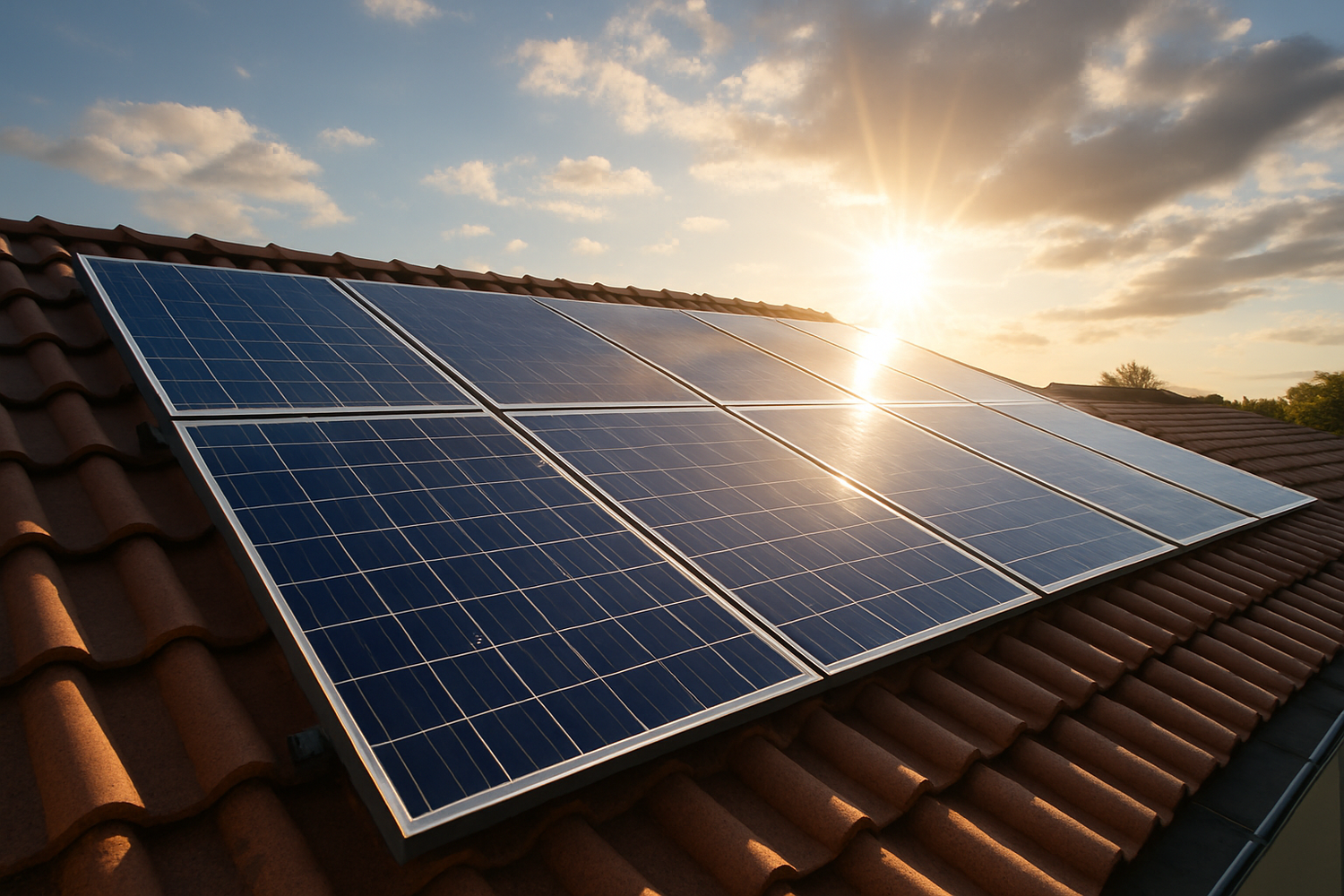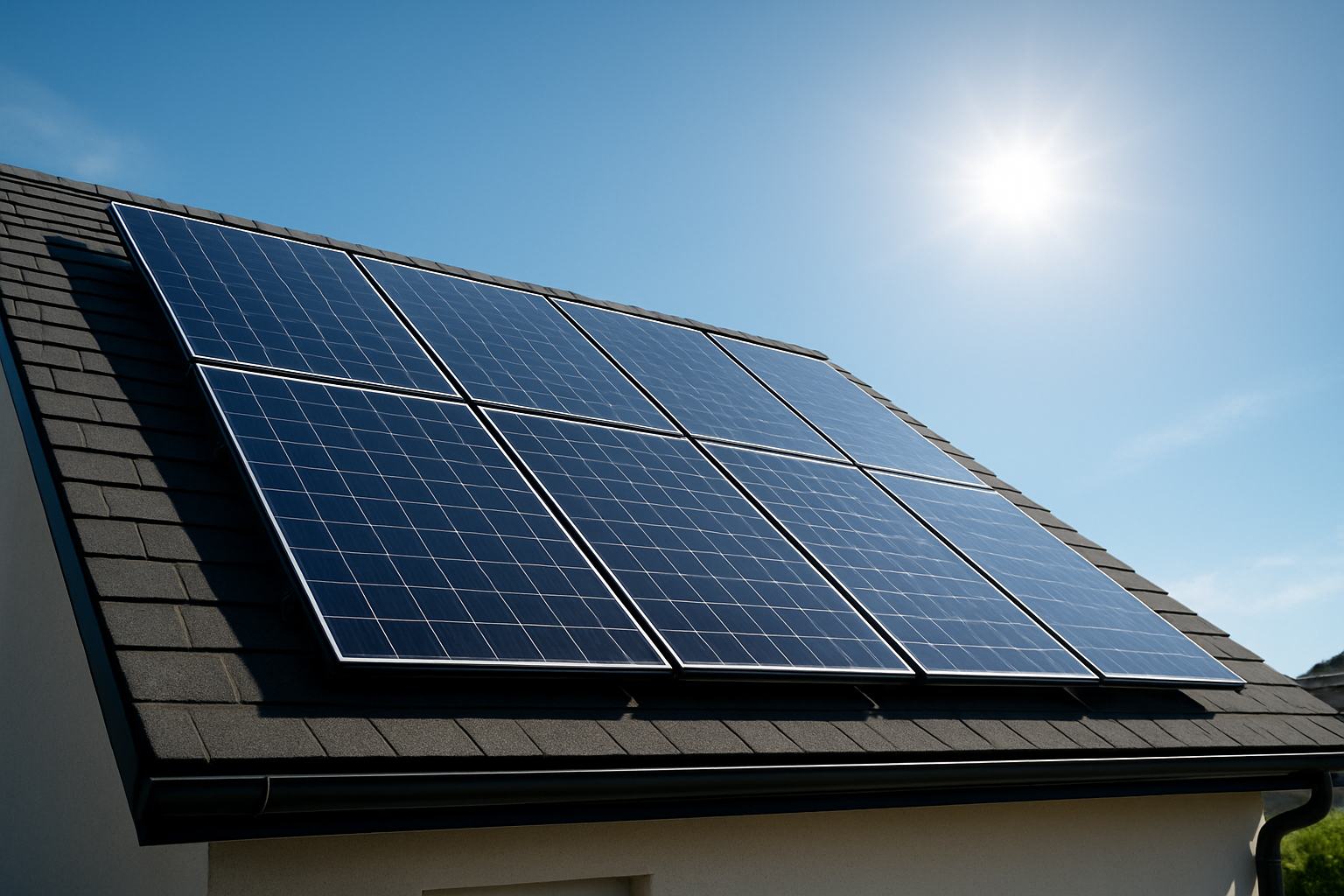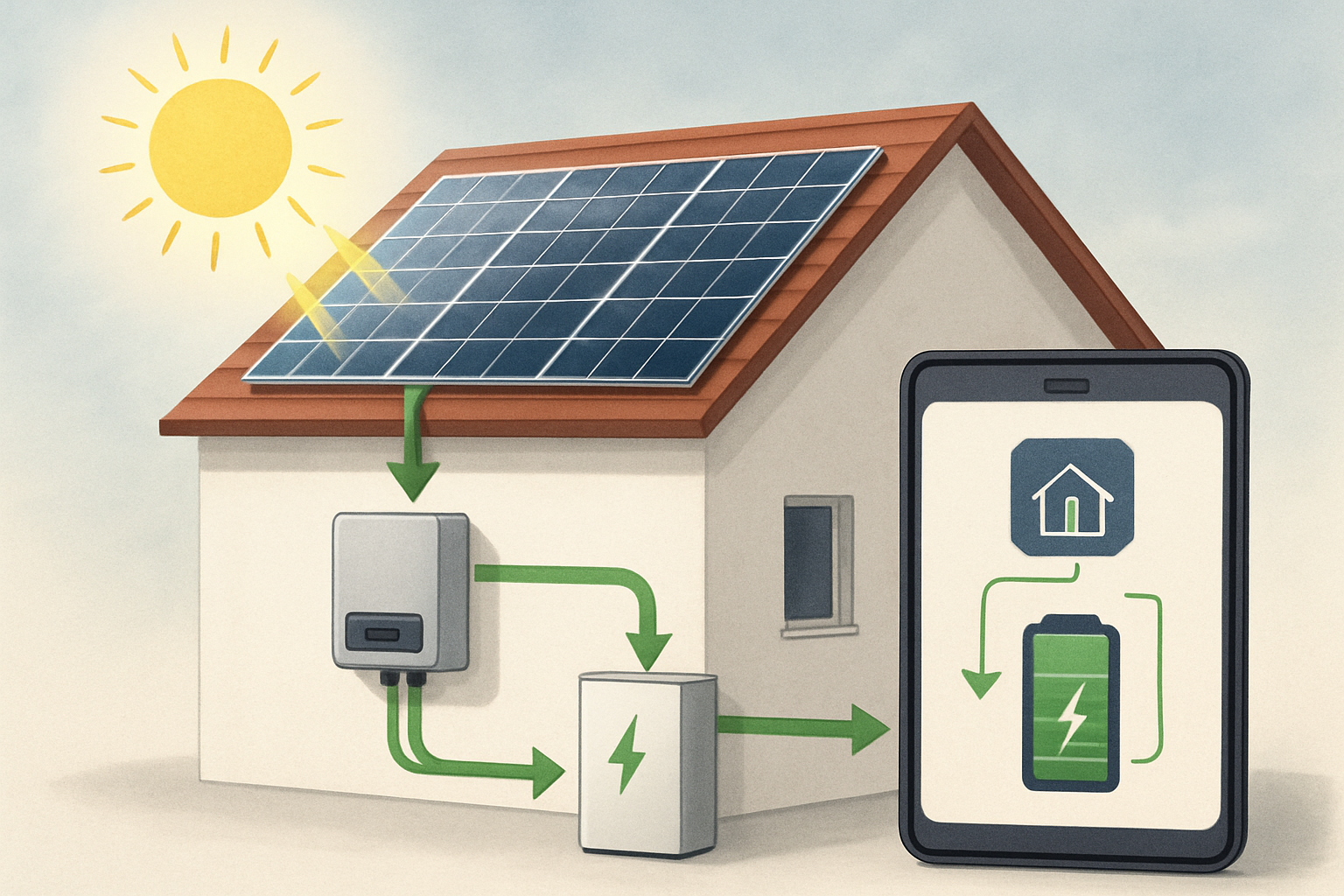Solar energy systems are fundamental to achieving energy independence. When considering a solar installation, you will encounter various technical terms. Among the most important are "solar module efficiency" and "performance ratio." While both relate to how well a solar system converts sunlight into electricity, they offer different perspectives on its effectiveness. This article clarifies these two metrics and highlights which one provides a more complete picture of a solar system's real-world performance.
Solar Module Efficiency: A Benchmark Under Controlled Conditions
Solar module efficiency refers to the percentage of sunlight a solar panel converts into usable electricity under specific, standardized laboratory conditions. These conditions, known as Standard Test Conditions (STC), involve a module temperature of 25°C, a solar irradiance of 1,000 watts per square meter (W/m²), and an air mass of 1.5.
A higher efficiency percentage means that a panel can convert more sunlight into electricity within a given area. For instance, a 20% efficient solar panel transforms 20% of the sunlight hitting it into electricity. This metric is valuable for comparing different solar panels and for optimizing space, especially when roof area is limited. Manufacturers continuously work to improve these percentages, with typical residential solar panels currently ranging between 19% and 23% efficiency. While impressive, this metric represents an ideal scenario, not necessarily the daily performance of a system installed outdoors. 
Performance Ratio (PR): The True Quality Indicator
The Performance Ratio (PR) stands as a comprehensive measure of a solar photovoltaic (PV) plant's overall quality and reliability. It quantifies the relationship between the actual energy output of a solar installation and its theoretically possible output, accounting for all system losses. Unlike module efficiency, which is a lab rating for a single panel, PR reflects how effectively the entire solar system operates under real-world conditions.
A PR value closer to 100% indicates a more efficient and well-performing PV plant. Achieving 100% is not feasible due to unavoidable energy losses, but high-performing systems can reach a PR of up to 80%. For example, a study of 250 PV systems across the United States reported an average PR of 93.5% (DC capacity), though first-year issues, snowfall, and inverter downtime were cited as reasons for values below 100%. Another analysis of 2,200 PV systems in California found an average weather-adjusted PR of 91.7%. Historically, average annual PR values for grid-connected PV systems in 14 countries, collected by the International Energy Agency (IEA) through its Photovoltaic Power Systems Programme (PVPS), ranged from 66% to 70% for systems installed between 1992 and 2002, with newer installations showing improved performance.
The PR calculation inherently factors in various real-world influences:
- Temperature Effects: As solar modules heat up, their efficiency decreases. PR accounts for these thermal losses.
- Wiring and Conduction Losses: Energy is lost as electricity travels through cables and connections. The type and material of cabling impact these losses.
- Inverter Efficiency: Solar inverters convert direct current (DC) from panels into alternating current (AC) for household use or the grid. The efficiency of this conversion directly impacts the PR.
- Soiling and Shading: Dust, dirt, snow, or partial shading from trees or buildings can reduce a panel's output. PR captures these reductions.
- Module Degradation: Solar panel output naturally decreases over time, a factor included in PR calculations.
Because PR is largely independent of a plant's orientation or incident solar irradiation, it is a robust metric for comparing the quality of PV plants in different locations.
The Dynamic Relationship: Module Efficiency's Role in Performance Ratio
While module efficiency is a component of the overall system, it does not solely determine a system's Performance Ratio. A highly efficient solar panel, if paired with a low-efficiency inverter or installed in a poorly ventilated area, will not yield a high PR. Conversely, a system with moderately efficient panels but excellent design, high-quality inverters, and minimal losses can achieve a superior PR.
Consider the following hypothetical comparison:
| System Characteristic | System A (High Module Efficiency, Lower PR Focus) | System B (Moderate Module Efficiency, High PR Focus) |
|---|---|---|
| Solar Module Efficiency | 22% | 19% |
| Inverter Efficiency | 95% | 98% |
| Wiring Losses | 3% | 1% |
| Temperature Derate | 10% | 5% |
| Shading/Soiling Losses | 5% | 2% |
| Estimated Performance Ratio (PR) | ~78% | ~88% |
This table illustrates that while System A boasts higher module efficiency, its overall system losses lead to a lower effective PR. System B, despite having slightly less efficient modules, achieves a better PR due to optimized components and reduced losses. This highlights that focusing solely on module efficiency without considering the entire system can lead to disappointing real-world performance.
Achieving Optimal System Performance for Energy Independence
To maximize your solar system's energy output and achieve true energy independence, prioritize the overall system design and component quality, which directly influence the Performance Ratio. Our expertise in the solar and energy storage industry enables us to provide solutions that enhance your system's PR.
-
Quality Solar Inverters
The inverter is a critical link in your solar system. Our advanced solar inverters are designed to convert the direct current (DC) from your solar panels into usable alternating current (AC) with minimal loss, contributing significantly to a higher Performance Ratio. High-efficiency inverters, with conversion rates often exceeding 98%, are vital for maximizing the energy captured by your panels.
-
Integrated Energy Storage Systems
To capture and utilize every watt-hour of electricity generated, an integrated energy storage system is paramount. Our residential energy storage systems combine high-performance lithium iron phosphate (LiFePO4) batteries with hybrid inverters and solar panels. These systems allow you to store excess solar energy generated during peak sunlight hours and use it when the sun is not shining, such as at night or during cloudy periods. This capability reduces reliance on the grid and enhances your system's effective PR by minimizing wasted energy.
-
Robust Off-Grid Solar Solutions
For homes, farms, or remote cabins seeking complete energy independence, our off-grid solar solutions offer reliable power. These comprehensive systems are built around robust LiFePO4 batteries and efficient solar inverters, ensuring consistent power supply even without grid connection. A well-designed off-grid system inherently aims for a high PR, as every unit of generated and stored energy is critical for sustained operation.
-
Professional Design and Maintenance
Beyond individual components, professional system design—including optimal panel orientation, tilt, and shading analysis—is crucial. Regular maintenance, such as cleaning panels and monitoring system performance, also prevents efficiency degradation over time, helping to maintain a high PR. The U.S. Department of Energy emphasizes that PV module efficiency unavoidably degrades with age at a rate of about 0.5% per year, making ongoing monitoring important.
Realizing Your Energy Potential
When evaluating solar solutions, remember that solar module efficiency indicates a panel's power under ideal conditions. The Performance Ratio, however, reveals the true effectiveness of your entire solar power system in the real world. Focusing on a high Performance Ratio means investing in a reliable, well-integrated system that delivers consistent power. By choosing quality components, including advanced solar inverters and durable LiFePO4 battery storage, you ensure your solar investment maximizes energy production and moves you closer to lasting energy independence.





Leave a comment
All comments are moderated before being published.
This site is protected by hCaptcha and the hCaptcha Privacy Policy and Terms of Service apply.